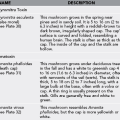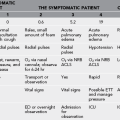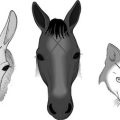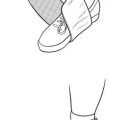Neurologic Emergencies
Stroke
Signs and Symptoms
Any or all of the following signs and symptoms may be present:
1. Patient may be alert, drowsy, lethargic, obtunded, or comatose
2. Visual field deficit or gaze preference
3. Sudden onset of unilateral weakness and numbness
4. Unilateral facial motor weakness (facial droop)
6. Sudden onset of dizziness, vertigo, diplopia, and ataxia
7. Sudden onset of severe headache (“the worst headache of my life”)
Treatment
1. Maintain an adequate airway, and administer oxygen.
2. Dehydration should be corrected with IV normal saline.
3. Assess the patient for hypoglycemia, and give dextrose if indicated (see later). Otherwise, dextrose-containing solutions should be avoided.
4. Keep the patient’s head and torso slightly elevated (at least 30 degrees).
5. Transport the patient immediately to the closest medical facility. Continuously assess the patient’s airway and level of consciousness because the condition can worsen dramatically during transport.
Seizure
Signs and Symptoms
1. A generalized (grand mal) seizure begins abruptly (there may be an aura) with loss of consciousness as the patient suddenly becomes rigid, with trunk and extremities extended, and falls to the ground. As the rigid (tonic) phase of the seizure subsides, there is increasing coarse trembling that evolves into rhythmic (clonic) jerking of the trunk and extremities. The eyes may deviate to one side, there is difficulty breathing, and occasionally there is loss of bladder and/or bowel control and tongue biting.
2. Most seizures last only 1 or 2 minutes.
3. After most seizures, the patient will be confused or combative (“postictal”) for a period of time (10 to 30 minutes) and then slowly return to normal.
Treatment
1. Protect the patient from injury during the seizure. This may be done with cushions, sleeping bag, or by moving hard objects away from the patient.
2. If possible, the patient should be turned to one side to reduce the risk for aspiration should vomiting occur.
3. Do not attempt to place a bite block or any object between the teeth or into the mouth.
4. Do not give the patient anything orally until he or she is awake and lucid.
5. If the patient is suffering from hypoglycemia, administer sugar as soon as possible.
a. If the patient is conscious and able to swallow, give him or her something containing sugar to drink or eat. This could be fruit juice, a banana, candy, or a nondiet soft drink. As soon as the patient feels better, have him or her eat a meal to avoid a recurrence.
b. If the patient is unconscious, place tiny amounts of sugar granules, cake icing, or Glutose paste (one tube contains 25 g [0.9 oz] glucose) under the patient’s tongue, where it will be passively swallowed and absorbed.
c. If available, administer one to three vials of IV 50% dextrose (D50) in water while completing the circulation, airway, and breathing (CAB) approach to resuscitation. In a child younger than 8 years of age, give 2 to 4 mL/kg of 25% dextrose (D25) or even 5 mL/kg of 10% dextrose (D10) in water. As an alternative in a patient for whom you cannot quickly obtain IV access, give 1 to 2 mg of glucagon intramuscularly (IM) or subcutaneously. This dose may be repeated as needed.
6. If the patient has continuous seizure activity for 10 minutes or more, or two or more seizures that occur without full recovery of consciousness between the attacks (status epilepticus), administer the following:
b. IV dextrose per earlier dosing
c. A benzodiazepine (one of the following):
• Diazepam: adult dose, 5 to 10 mg IV/IM or 10 mg PR q5min × two doses prn (max 20 mg total); pediatric dose, 0.3 mg/kg IV q5-10 min × two doses prn (max 10 mg per dose)
• Lorazepam: adult dose, 1 to 2 mg IV/IM q 5-10 min × two doses prn; pediatric dose, 0.05 to 0.1 mg/kg IV q5-10 min × two doses prn (max 4 mg per dose)
• Midazolam: adult dose, 5 mg IV/IM q5-10 min × two doses prn; pediatric dose, 0.15 to 0.2 mg/kg IV/IM/intranasal atomized q5-10 min × two doses prn
Headache
Headaches stem from innumerable causes, including tension and stress, migraine, dehydration, altitude illness, alcohol hangover, carbon monoxide poisoning, brain tumor, stroke, aneurysm, intracranial hemorrhage, fever, flu, meningitis and other infectious diseases, high blood pressure, sinus infection, and dental problems. Suddenly going “cold turkey” without caffeine during a backpacking trip, especially if you regularly drink more than three cups of coffee a day, can also precipitate a headache (Box 28-1).
Tension Headache (Stress or Muscle Contraction Headache)
Signs and Symptoms
Treatment
1. Loosen any tight-fitting pack straps or hat, and adjust the person’s pack so that it rides comfortably.
2. Administer a nonsteroidal antiinflammatory drug (NSAID) such as ibuprofen 600 mg PO q6h, or acetaminophen 1 g PO q6h prn.
3. For severe pain, administer hydrocodone 5 mg in combination with acetaminophen 325 mg, 1 to 2 tablets PO q4-6 h prn.
Migraine Headache
1. Throbbing, recurrent headaches that typically involve one side of the head
2. Nausea and vomiting are common
4. Walking or physical exertion makes the pain worse
5. About 15% of individuals with migraine headaches experience an aura (flashing lights, distorted shapes and colors, blurred vision, or other visual apparitions) before the onset of the headache.
Treatment
1. Administer an NSAID such as ibuprofen (Motrin) 600 mg PO q6h, or acetaminophen (Tylenol) 1 g PO q6h prn.
2. Caffeine-containing beverages such as coffee may help relieve symptoms, especially if taken early.
3. Consider administering sumatriptan succinate (Imitrex) 6 mg subcutaneously by autoinjector or 25 mg PO, or as a 5- or 20-mg nasal spray. Doses may be repeated in 1 hour if not effective to a total of 12 mg subcutaneously, 200 mg PO, or 50 mg nasally in 1 day.
4. Consider administering a stronger pain medication such as hydrocodone 5 mg with acetaminophen 325 mg, 1 to 2 tablets PO q4-6 h prn.
5. Administer an antiemetic. Ondansetron 4 to 8 mg may be given PO or IV q8h and is very effective with few side effects. It is also available in an oral dissolvable tablet form that rapidly dissolves when placed on a person’s tongue. Other choices include prochlorperazine 5 to 10 mg PO/IM/IV q6h or as a 25-mg rectal suppository, or promethazine 12.5 to 25 mg PO/IV/IM/PR q6h.
Meningitis
An infection in the cerebrospinal fluid surrounding the brain
Signs and Symptoms
Treatment
1. Evacuate the patient immediately to the nearest medical center.
2. Administer antibiotics. A third-generation cephalosporin such as ceftriaxone (1 g IV/IM q8h for adults and 50 mg/kg IV/IM q8h for children) with the addition of ampicillin (2 g IV q4h in adults and 50 mg/kg IV q4h in children) is an adequate choice to use during transport to definitive medical care. In addition, acyclovir 10 mg/kg IV q8h should be given for empirical treatment of herpes simplex virus meningitis or encephalitis.
3. Administer dexamethasone (0.4 mg/kg IV) 15 to 20 minutes before the first dose of antibiotics.
Bell’s Palsy
Signs and Symptoms
1. Almost 50% of patients experience pain in the mastoid region behind the ear when symptoms are first noted.
2. Weakness and/or paralysis of the muscles (upper and lower) of one side of the face. It is important to differentiate Bell’s palsy from a stroke. Bell’s palsy should cause weakness on one side of the face, including the forehead. A stroke will not produce weakness of the forehead (the patient will still be able to wrinkle his or her forehead when looking upward).
3. Taste may be reduced or lost on the anterior two-thirds of the tongue on the same side as the facial weakness.
Treatment
1. Administer prednisone 40 to 60 mg/day PO for 5 to 10 days.
2. Recent randomized, controlled trials have demonstrated no recovery benefit with the addition of antiviral medication.
3. The patient should wear an eye patch to protect the eye.
4. Lacri-Lube or another eye lubricant should be applied every 3 to 4 hours.






